I'm trying to migrate from EJB2.x to EJB3.x and i'm using Wildfly 9.0.0. The old EJB2.x is working in JBoss 4.2.2 and this is how it looks like:
public interface WUFFacadeRemote extends EJBObject {
public ClientData getItems(ClientData data);
public ClientData save(ClientData data);
}
public interface WUFFacadeHome extends EJBHome {
public WUFFacadeRemote create();
}
public class WUFFacade {
public ClientData getItems(ClientData data) {
//code here
}
public ClientData save(ClientData data) {
//code here
}
}
public class WUFAction extends HttpServlet implements IAction {
public void doPost(HttpServletRequest request, HttpServletResponse response) {
...
Object objRef = ic.lookup("java:comp/env/wUF");
com.wuf.WUFFacadeHome home = (com.wuf.WUFFacadeHome) PortableRemoteObject.narrow(objRef, com.wuf.WUFFacadeHome.class);
engine = home.create();
//engine gets the reference, and I can use it normally.
...
}
}
I also have the ejb-jar.xml and it's working. Now, the solution I was thinking to EJB3.x and Wildfly 9.0.0 is as below:
@WebServlet(urlPatterns = "windows/wUF.do", loadOnStartup = 1)
public class WUFAction extends HttpServlet implements IAction {
@EJB
private WUFFacadeRemote engine;
public void doPost(HttpServletRequest request, HttpServletResponse response) {
//Here I should be able to use my engine.
//Wildfly starts and I call the page, engine is not null at this moment,
//but after I call the page again, it becomes null and remains null.
}
}
@Stateless
@Remote(WUFFacadeRemote.class)
public class WUFFacade extends RootFacade implements WUFFacadeRemote, Serializable {
public WUFFacade() { }
@EJB
FUFHome home;
public ClientData getItems(ClientData data) {
//code here
}
public ClientData save(ClientData data) {
//code here
}
private Col load(ClientData data,InitialContext ic) {
//here i'm calling home.
// but home is always null. It was supposed to have the @EJB reference initialized.
//But instead I get a null pointer...
home.findByFilter(loader);
}
}
@Remote(FUFHome.class)
public interface FUFHome {
FUF create(FUFValue fUFValue);
FUF findByPrimaryKey(FUFPK pk);
Collection findByFilter(FacadeLoader loader);
}
public interface WUFFacadeRemote{
public ClientData getItems(ClientData data);
public ClientData save(ClientData data);
}
I don't have ejb-jar.xml anymore, the deploy is sucessfully done and Wildfly starts with no errors. Then the first time I call the page in question, it seems that @EJB is working (Debug is "Proxy for remote EJB StatelessEJBLocator for "bus-facade/WUFFacade", view is interface com.wuf.WUFFacadeRemote, affinity is None"), the value is not null, but for all subsequent calls, my variable is null and I got a NullPointerException.
I really don't know what i'm doing wrong (maybe i'm completely lost), but to me, @EJB should be working correctly like that. What am I missing? Thanks.
As i'm using EJB3.x i'm just using annotations now, (this seems to be ok).
JNDIs:
JNDI bindings for session bean named FUF in deployment
java:global/fumo/bus-entities-fumo/FUF!apyon.components.fumo.fuf.FUF
java:app/bus-entities-fumo/FUF!apyon.components.fumo.fuf.FUF
java:module/FUF!apyon.components.fumo.fuf.FUF
java:global/fumo/bus-entities-fumo/FUF
java:app/bus-entities-fumo/FUF
java:module/FUF
JNDI bindings for session bean named WUFFacade
java:global/fumo/bus-facade-fumo/WUFFacade!apyon.fumo.wuf.WUFFacadeRemote
java:app/bus-facade-fumo/WUFFacade!apyon.fumo.wuf.WUFFacadeRemote
java:module/WUFFacade!apyon.fumo.wuf.WUFFacadeRemote
java:jboss/exported/fumo/bus-facade-fumo/WUFFacade!apyon.fumo.wuf.WUFFacadeRemote
java:global/fumo/bus-facade-fumo/WUFFacade
java:app/bus-facade-fumo/WUFFacade
java:module/WUFFacade

